1.
Introduction
Hoops are algebraic structure which are introduced by B. Bosbach in [5,6] are naturally ordered commutative residuated integral monoids. In the last years, some mathematician studied hoop theory in different fields [1,2,3,5,6,7,8,9,10,17,19]. Most of these results have a very deep relation with fuzzy logic. Particularly, by using of some theorems and notions of finite basic hoops, in [1] the authors could find a short proof for completeness theorem for propositional basic logic, which is introduced by Hájek in [11]. BL-algebras, the familiar cases of hoops, are the algebraic structures corresponding to basic logic. In algebra of logics, there are some sub-algebras that are very important and have a fundamental role in these algebraic structures. They are very similar to normal subgroups in group theory and ideals in ring theory which we called them filters and by using these notion we can introduce a congruence relation on algebraic structures and study the quotient structure that is made by them. Kondo, in [14], introduced different kinds of filters such as implicative, positive implicative and fantastic filters of hoops and investigated some properties of them. Borzooei and Aaly Kologani in [7], investigated these filters deeply and they introduced some equivalent characterizations of these filters on hoops. Also, they studied the relation among these filters and they showed some equivalent characterizations of these filters.
Zadeh in [21] introduced the notion of fuzzy sets and different kinds of operations on them. After that mathematicians studied on them and applied it to diverse fields. Actually, fuzzy mathematics have reached by studying of fuzzy subsets and their application to mathematical contexts. Nowadays, fuzzy algebra is an important branch of mathematics and mathematicians studied it in different fileds. For example, Rosenfeld in [18] studied fuzzy sub-groups in 1971. After using the concept of fuzzy sets to group theory and defined the notion of fuzzy subgroups, in [21] by Rosenfeld, the different fuzzy algebraic concepts has been growing very fast [12,13,16] and applied in other algebraic structures such as lattices, semigroups, rings, ideals, modules and vector spaces. Moreover, the concepts related to fuzzy sets have been used in various fields, including its use in fuzzy graphs and its application in decision theory. Borzooei and Aaly Kologani in [8], studied the notions of fuzzy filter of hoops and the relation among them and characterized some properties of them. Also, they defined a congruence relation on hoops by a fuzzy filter and proved that the quotient structure of this relation is a hoop.
Atanassov for the first time introduced the term, an intuitionistic fuzzy set [4] that is an extended form of a fuzzy set. These are the sets containing elements having degrees of membership and non-membership. Intuitionistic fuzzy sets are more adaptable and real intending to the uncertainty and vagueness than the conventional fuzzy sets. The foremost critical property of intuitionistic fuzzy sets not shared by the fuzzy sets is that modular operators can be characterized over intuitionistic fuzzy sets. The intuitionistic fuzzy sets have basically higher depicting conceivable outcomes than fuzzy sets. Also, there are a lot of applications of intuitionistic fuzzy sets in decision making, pattern recognition, medical diagnosis, neural models, image processing, market prediction, color region extraction, and others. In the last years, some mathematician studied intuitionistic fuzzy sets in different fields [15,20]. In decision-making problems, the use of fuzzy approaches is ubiquitous. The purpose of these intuitionistic fuzzy sets is, to provide a new approach with useful mathematical tools to address the fundamental problem of decision-making. The generality of the fuzzy set is given special importance, illustrating how many interesting decision-making problems can be formulated as a problem of fuzzy sets. These applied contexts provide solid evidence of the wide applications of fuzzy sets approach to model and research decision-making problems.
Now, in the following we define the notions of intuitionistic fuzzy filters and intuitionistic fuzzy implicative (positive implicative, fantastic) filters on hoops. Then we show that all intuitionistic fuzzy filters make a bounded distributive lattice. Also, by using intuitionistic fuzzy filters we introduce a relation on hoops and show that it is a congruence relation, then we prove that the algebraic structure made by it is a hoop. Finally, we investigate the conditions that quotient structure will be different algebras of logics such as Brouwerian semilattice, Heyting algebra and Wajesberg hoop.
2.
Preliminaries
In this section, we refer to the basic concepts and properties required in the field of hoop and fuzzy sets that we will use in the following sections.
A hoop is an algebraic structure (H,∗,↠,1) such that, for any d,s,q∈H:
(HP1) (H,∗,1) is a commutative monoid,
(HP2) d↠d=1,
(HP3) (d∗s)↠q=d↠(s↠q),
(HP4) d∗(d↠s)=s∗(s↠d).
On hoop H, we define the relation ⪯ by d⪯s iff d↠s=1. Obviously, (H,⪯) is a poset. A hoop H is said to be bounded if H has a least element such as 0, it means that for all d∈H, we have 0⪯d. Define d0=1,dn=dn−1∗d, for any n∈N. If H is bounded, then we can introduce a unary operation "′" on H such that d′=d↠0, for any d∈H. The bounded hoop H is said to have the double negation property, or (DNP), for short if (d′)′=d, for any d∈H (see [1]).
The next proposition provides some properties of hoop.
Proposition 2.1. [5,6] Suppose (H,∗,↠,1) is a hoop and d,s,q∈H. Then:
(i) (H,⪯) is a ∧-semilattice with d∧s=d∗(d↠s).
(ii) d∗s⪯q iff d⪯s↠q.
(iii) d∗s⪯d,s and dn⪯d, for any n∈N.
(iv) d⪯s↠d.
(v) 1↠d=d.
(vi) d↠1=1.
(vii) d∗(d↠s)⪯s.
(viii) d⪯(d↠s)↠s.
(ix) d↠s⪯(s↠q)↠(d↠q).
(x) (d↠s)∗(s↠q)⪯d↠q.
(xi) d⪯s implies d∗q⪯s∗q.
(xii) d⪯s implies q↠d⪯q↠s.
(xiii) d⪯s implies s↠q⪯d↠q.
(xiv) ((d↠s)↠s)↠s=d↠s.
Proposition 2.2. [5,6] Suppose H is a bounded hoop and d,s∈H. Then:
(i) d⪯d″.
(ii) d∗d′=0.
(iii) d′⪯d↠s.
Proposition 2.3. [10] Let H be a hoop and d,s∈H. Define a binary operation ⊔ on H as d⊔s=((d↠s)↠s)∧((s↠d)↠d). Then for any d,s,q∈H, the next conditions are equivalent:
(i) ⊔ is associative,
(ii) d⪯s implies d⊔q⪯s⊔q,
(iii) d⊔(s∧q)⪯(d⊔s)∧(d⊔q),
(iv) ⊔ is the join operation on H.
Remark 2.4. A hoop H is said to be a ⊔-hoop if ⊔ satisfies in one of the conditions of Proposition 2.3. Note that any ⊔-hoop (H,⊔,∧) is a distributive lattice (see [10]).
A non-empty subset K of H is said to be a filter of H if (F1): d,s∈K implies d∗s∈K, (F2): d∈K and d⪯s imply s∈K, for any d,s∈H. This definition is equal with, if 1∈K and if d,d↠s∈K, then s∈K, for any d,s∈H. We use F(H) to denote the set of all filters of H. Clearly, 1∈K, for all K∈F(H). A proper filter is a filter which is not equal to H. Obviously, a filter is proper iff 0∉H if H is a bounded hoop. Assume ∅≠K⊆H such that 1∈K. Then K is called an implicative filter of H if, d↠((s↠q)↠s)∈K and d∈K imply s∈K, for any d,s,q∈H, is called a positive implicative filter of H if, (d∗s)↠q∈K and d↠s∈K imply d↠q∈K, for any d,s,q∈H, is called a fantastic filter of H if q↠(s↠d)∈K and q∈K imply ((d↠s)↠s)↠d∈K, for any d,s,q∈H (see [10,14]).
Let H be a set. A fuzzy set ς on H is a map ς:H→[0,1]. Let ϱB,ςB:H→[0,1] be two fuzzy sets on H and mapping B:H→[0,1]×[0,1] is defined by B(d)=(ςB(d),ϱB(d)), for any d∈H. Then B=(ςB,ϱB) is called an intuitionistic fuzzy set or an IF-set of H if ςB(x)+ϱB(d)⪯1, for all d∈H or denoted by B={⟨d,ςB(d),ϱB(d)⟩∣d∈H}. The family of all intuitionistic fuzzy sets on H will be denoted by IFS(H). Let B=(ςB,ϱB),C=(ςC,ϱC)∈IFS(H). Then we define B∩C=(ςB∧ςC,ϱB∨ϱC),B∪C=(ςB∨ςC,ϱB∧ϱC) and B⊆C iff ςB⪯ςC,ϱB⪰ϱC. Let B=(ςB,ϱB) and C=(ςC,ϱC) be two IF-sets on H. Then, for any d∈H, we define a relation between them as follows:
A fuzzy set ς on hoop H is called a fuzzy filter of H if for all d,s∈H, ς(d)⪯ς(1) and
Proposition 2.5. [8] Let ς be a fuzzy filter on hoop H. Then, for any d,s∈H, d⪯s implies ς(d)⪯ς(s).
Theorem 2.6. [8] Let ς be a fuzzy set on hoop H and for r∈[0,1] ςr={d∈H∣ς(d)⪰r}. Then ς is a fuzzy filter of H iff for any r∈[0,1], ςr≠∅ is a filter of H.
Theorem 2.7. [8] Let ς be a fuzzy filter on hoop H and fuzzy relation ≈ς on hoop H is defined by
Then ≈ς is a congruence relation on H.
Theorem 2.8. [8] Suppose H is a hoop and H≈ς={[e]ς∣e∈H}. Define the operations ⊗ and ↪ on H≈ς as follows:
Then (H≈ς,⊙,↪,[1]ς) is a hoop.
Notation. In the following, we will consider in this article H as a hoop and ς and ϱ as fuzzy sets. Moreover, the set of all fuzzy filters of H and anti-fuzzy filter of H are denoted by FF(H) and AFF(H), respectively.
3.
Construction of hoops by anti-fuzzy filters
In this section, the concept of anti-fuzzy filter on hoop H is defined and some related results are investigated.
A complement of ς is the fuzzy set ςc which is defined by, ςc(d)=1−ς(d), for any d∈H.
Definition 3.1. ϱ is called an anti-fuzzy filter of H if for any d,s∈H:
(AFF1) ϱ(d∗s)⪯max{ϱ(d),ϱ(s)}=ϱ(d)∨ϱ(s),
(AFF2) if d⪯s, then ϱ(s)⪯ϱ(d).
Example 3.2. Let H={0,e,k,1} be a chain such that 0⪯e⪯k⪯1. Define the operations ∗ and ↠ on H as follows:
Then (H,∗,↠,0,1) is a bounded hoop. Define ϱ:H→H such that ϱ(1)=0, ϱ(0)=ϱ(e)=0.5 and ϱ(k)=0.3. Then ϱ is an anti-fuzzy filter of H.
Remark 3.3. (1) The following statements hold:
(i) ς∈FF(H) iff ςc∈AFF(H).
(ii) ϱ∈AFF(H) iff ϱc∈FF(H).
(2) It is easy to see that ς(d)⪯ς(1)(ϱ(1)⪯ϱ(d)) and ς(0)⪯ς(d)(ϱ(d)⪯ϱ(0)), for any d∈H.
Theorem 3.4. Suppose for any r∈[0,1], we have ϱr={d∈H∣ϱ(d)⪯r}. Then ϱ∈AFF(H) iff for any r∈[0,1], ϱr≠∅ is a filter of H.
Proof. The proof is clear. In the next proposition we investigate some properties of anti-fuzzy filters of hoops.
Proposition 3.5. Assume ϱ(1)⪯ϱ(d), for all d∈H. Then for all d,s,q∈H, the next statements are equivalent:
(i) ϱ∈AFF(H),
(ii) If d⪯s↠q, then ϱ(q)⪯ϱ(d)∨ϱ(s),
(iii) ϱ(d↠q)⪯ϱ(d↠s)∨ϱ(s↠q),
(iv) ϱ(s∗q)⪯ϱ(d∗q)∨ϱ(d↠s),
(v) ϱ(d↠q)⪯ϱ((d↠s)↠q)∨ϱ(s).
Proof. (i)⇒(ii) Let ϱ∈AFF(H) and d,s,q∈H such that d⪯s↠q. Then ϱ(s↠q)⪯ϱ(d). By Proposition 2.1(vii), s∗(s↠q)⪯q, since ϱ∈AFF(H), we have ϱ(q)⪯ϱ(s∗(s↠q))⪯ϱ(s)∨ϱ(s↠q). Hence, ϱ(q)⪯ϱ(s)∨ϱ(d).
(ii)⇒(iii) By Proposition 2.1(ix), d↠s⪯(s↠q)↠(d↠q). Then by (ii),
(iii)⇒(i) Let d⪯s, then d↠s=1. Thus, by (iii) and assumption,
Also, from d∗s⪯d∗s, by Proposition 2.1(ii), d⪯s↠(d∗s), then ϱ(s↠(d∗s))⪯ϱ(d). Let d=1 and q=d∗s in (iii). Then
Hence, ϱ∈AFF(H).
(ii)⇒(iv) By Proposition 2.1(vii) and (xi), (q∗d)∗(d↠s)⪯q∗s. Then q∗d⪯(d↠s)↠(q∗s). Thus, by (ii), ϱ(q∗s)⪯ϱ(q∗d)∨ϱ(d↠s).
(iv)⇒(v) Let d,s,q∈H. By Proposition 2.1(iii) and (iv), d∗s⪯s⪯d↠s. Then by Proposition 2.1(xiii) and (HP3),
Thus, by Proposition 2.1(vii), s∗((d↠s)↠q)⪯d↠q. Also, if d⪯s, let q=1 in (iv), then by assumption ϱ(s)=ϱ(1∗s)⪯ϱ(d∗1)∨ϱ(d↠s)=ϱ(d), and so ϱ(d↠q)⪯ϱ(s∗((d↠s)↠q)). Moreover, if q=d and d=1 in (iv), then ϱ(d∗s)⪯ϱ(d)∨ϱ(s). Hence,
(v)⇒(ii) Let d⪯s. Then d↠s=1. It is enough to choose d=1,q=s and s=d in (v). Thus, by assumption,
So, if d⪯s↠q, then ϱ(s↠q)⪯ϱ(d). Now, let d=1 in (v), then
Theorem 3.6. Let ϱ∈AFF(H) and fuzzy relation ≈ϱ on H be defined by
Then ≈ϱ is a congruence relation on H.
Proof. Since ϱ∈AFF(H), for all d∈H, we get
Hence ≈ϱ is reflexive. Clearly, ≈ϱ is symmetric. Now, suppose d≈ϱs and s≈ϱq, for d,s,q∈H. Then ϱ(d↠s)∨ϱ(s↠d)=ϱ(1) and ϱ(s↠q)∨ϱ(q↠s)=ϱ(1). Thus,
Moreover, since ϱ is an anti-fuzzy filter, by Propositions 2.1(x), 3.5(iii) and Remark 3.3(2), we have
So, d≈ϱq and this means that ≈ϱ is transitive. Hence, ≈ϱ is an equivalence relation. Now, we prove that ≈ϱ is a congruence relation. Let d,s,q∈H such that d≈ϱs. Then ϱ(d↠s)∨ϱ(s↠d)=ϱ(1). Since s∗q⪯s∗q, by Proposition 2.1(ii) and (xii), d↠s⪯d↠(q↠(s∗q)). Thus by (HP3), d↠s⪯(d∗q)↠(s∗q). Since ϱ is an anti-fuzzy filter, ϱ(d↠s)⪰ϱ((d∗q)↠(s∗q)). By the similar way, ϱ(s↠d)⪰ϱ((s∗q)↠(d∗q)). Thus,
Hence, d∗q≈ϱs∗q. On the other hand, by Proposition 2.1(ix), d↠s⪯(s↠q)↠(d↠q), for any d,s,q∈H. From ϱ is an anti-fuzzy filter, ϱ(d↠s)⪰ϱ((s↠q)↠(d↠q)). By the similar way, ϱ(s↠d)⪰ϱ((d↠q)↠(s↠q)). Then
and so d↠q≈ϱs↠q. By the similar way, we can see q↠d≈ϱq↠s. Therefore, ≈ϱ is a congruence relation on H.
For any e∈H, [e]ϱ denotes the equivalence class of e with respect to ≈ϱ. Clearly
Theorem 3.7. Let H≈ϱ={[e]ϱ∣e∈H} and operations ⊗ and ↪ on H≈ϱ defined as follows:
Then (H≈ϱ,⊗,↪,[1]ϱ) is a hoop.
Proof. We have [e]ϱ=[k]ϱ and [m]ϱ=[z]ϱ iff e≈ϱk and m≈ϱz. Since ≈ϱ is the congruence relation on H, we get that all above operations are well-defined. Thus, by routine calculation, we can see that H≈ϱ is a hoop. Now, we define a binary relation on H≈ϱ by
Easily we can see (H≈ϱ,⪯) is a partial order monoid.
Example 3.8. Let H be the hoop as in Example 3.2. Define a map ϱ:H→H by ϱ(1)=ϱ(k)=0.3 and ϱ(0)=ϱ(e)=0.5. Then, we have [0]ϱ={0}, [e]ϱ={e} and [k]ϱ=[1]ϱ={k,1}. Hence, H≈ϱ={[0]ϱ,[e]ϱ,[1]ϱ}, which by the operations defining in Theorem 3.7 is a hoop.
4.
Construction of hoops and distributive lattices by intuitionistic fuzzy filters
In the following, we define the concept of intuitionistic fuzzy filter on hoop H and investigate some related results.
Definition 4.1. An intuitionistic fuzzy set or IF-set B=(ςB,ϱB) on H is called an intuitionistic fuzzy filte or an IF-filter of H if, for any d,s∈H, it satisfies the next conditions:
(IFF1) if d⪯s, then ςB(d)⪯ςB(s) and ϱB(s)⪯ϱB(d),
(IFF2) ςB(d∗s)⪰ςB(d)∧ςB(s),
(IFF3) ϱB(d∗s)⪯ϱB(d)∨ϱB(s).
The family of all intuitionistic fuzzy filters of H will be denoted by IFF(H).
Example 4.2. Let H be the hoop as in Example 3.2. Define ςB(1)=0.9, ςB(0)=ςB(e)=0.5, ςB(k)=0.7 and ϱB(1)=0.1, ϱB(0)=ϱB(e)=0.5 and ϱB(k)=0.3. Then B=(ςB,ϱB) is an intuitionistic fuzzy filter on H.
Proposition 4.3. An IF-set B=(ςB,ϱB) on A is an IF-filter iff ςB∈FF(H) and ϱB∈AFF(H) such that ςB(d)+ϱB(d)⪯1.
Proof. By Definitions 3.1, 4.1 and Proposition 2.5, the proof is clear. In the next example, we show that the condition ςB(d)+ϱB(d)⪯1, for any d∈H is necessary.
Example 4.4. Let H be the hoop as in Example 3.2. Define
Clearly, ςB∈FF(H) and ϱB∈AFF(H) such that ςB(1)+ϱB(1)⪰1. Hence, B=(ςB,ϱB) is not an IF-set of H.
In the next proposition we prove that by a fuzzy filter (anti-fuzzy filter) on A we can make an IF-filter.
Proposition 4.5. Let B=(ςB,ϱB) be an IF-set on H. Then B is an IF-filter iff BC=(ςB,ςcB) and CB=(ϱcB,ϱB) are IF-filters of H.
Proof. (⇒) Let B=(ςB,ϱB) be an IF-filter of H. By Definition 4.1, ςB∈FF(H) and ϱB∈AFF(H). Thus, by Remark 3.3, ςcB∈AFF(H) and νcB∈FF(H). Also, from ςB+ςcB⪯1 and ϱB+ϱcB⪯1, obviously, BC=(ςB,ςcB) and CB=(ϱcB,ϱB) are IF-filters of H.
(⇐) Let BC=(ςB,ςcB) and CB=(ϱcB,ϱB) be IF-filters of H. Then ςB∈FF(H) and ϱB∈AFF(H). From, B=(ςB,ϱB) is an IF-set on H, then ςB+ϱB⪯1. Thus, by Proposition 4.3, B is an IF-filter of H.
Theorem 4.6. Let B=(ςB,ϱB) be an IF-set on H and for any r∈[0,1],
Then B is an IF-filter of H iff for any r∈[0,1], Br≠∅ is a filter of H.
Proof. By Theorems 2.6, 3.4 and Proposition 4.3, the proof is clear. Now, we mainly investigate the lattice of all IF-filters by introducing the notion of tip-extended pair of IF-sets.
Proposition 4.7. Let {Bi=(ςBi,ϱBi)}i∈I be a set of IF-filters of H and fuzzy sets ⋀i∈IςBi and ⋁i∈IϱBi on H are defined as follows:
and IF-set ⋂i∈IBi on H, are defined by ⋂i∈IBi=(⋀i∈IςBi,⋁i∈IϱBi). Then B=⋂i∈IBi=(ςB,ϱB) is an IF-filter of H, too.
Proof. Let {Bi=(ςBi,ϱBi)}i∈I be a set of IF-filters of H and B=⋂i∈IBi=(ςB,ϱB) such that ςB=⋀i∈IςBi and ϱB=⋁i∈IϱBi. Let d,s,q∈H such that d⪯s↠q. Then
In the next example we show that (⋁i∈IςBi,⋁i∈IϱBi) is not an IF-filter, in general.
Example 4.8. Let H be as Example 4.4 and;
ςB1(1)=0.4,ςB1(e)=ςB1(0)=0.2,ςB1(k)=0.3,ϱB1(1)=0.6,ϱB1(e)=ϱB1(0)=0.8andϱB1(k)=0.7ςB2(1)=0.5,ςB2(e)=ςB2(0)=0.3,ςB2(k)=0.4,ϱB2(1)=0.5,ϱB2(e)=ϱB2(0)=0.7andϱB2(k)=0.6ςB3(1)=1,ςB3(e)=ςB3(0)=0.5,ςB3(k)=0.7,ϱB3(1)=0,ϱB3(e)=ϱB3(0)=0.5andϱB3(k)=0.3ςB4(1)=0.3,ςB4(e)=ςB4(0)=0.1,ςB4(k)=0.2,ϱB4(1)=0.7,ϱB4(e)=ϱB4(0)=0.9andϱB4(k)=0.8
Then (∨ςB(1),∨ϱB(1))=(1,0.7) such that ςB+ϱB⪰1, which is a contradiction with definition of IF-set.
Let L be an IF-set on H. The intersection of all IF-filters containing L is called the generated IF-filter by L, denoted as ⟨L⟩.
Theorem 4.9. Let L=(ςL,ϱL) be an IF-set on H and B=(ςB,ϱB) is defined on H by;
and
for all d∈H, ei∈H, 1⪯i⪯n and n∈N. Then B=⟨L⟩.
Proof. First, we verify that B is an IF-filter. For all d,s∈H, such that d⪯s, the definition of B yields that ςB(d)⪯ςB(s) and ϱB(s)⪯ϱB(d). For all d,s,ei,kj,ml∈H, 1⪯i⪯n, 1⪯j⪯m, 1⪯l⪯k and n,m,k∈N, we have
and
Thus B is an IF-filter. Secondly, let C be an IF-filter such that L⊆C. By definition of IF-filter, for all d,s,ei∈H, 1⪯i⪯n and n∈N, it holds that
and
and hence, B⊆C. Thus, B=⟨L⟩.
Associating with the above results, similar to the proof of ([15,Theorems 10–12]), we define the operations ⊓ and ⊔ on IF-filters of H in this way, B⊓C=B∩C and B⊔C=⟨B∪C⟩, for any B,C∈IFF(H).
Theorem 4.10. (IFF(H),⊓,⊔,∅,H) is a bounded distributive lattice.
Proof. The proof is similar to the proof of [15,Theorems 10–12].
Theorem 4.11. Let B=(ςB,ϱB) be an IF-filter of H and fuzzy relation ≈B on H, for any d,s∈H, is defined by
Then ≈B is a congruence relation on H.
Proof. The proof is similar to the proof of Theorems 2.7 and 3.6.
Theorem 4.12. Let H≈B={[e]B∣e∈H} and operations ⊙ and ↪ on H≈B are defined as follows:
Also, we define a binary relation on H≈B by
Clearly, (H≈B,⪯) is a poset. Then (H≈B,⊙,↪,[1]B) is a hoop.
Proof. The proof is similar to the proof of Theorems 2.8 and 3.7.
Example 4.13. Let H be the hoop as in Example 3.2. Define ςB(0)=ςB(e)=0.5, ςB(1)=ςB(k)=0.7 and ϱB(0)=ϱB(e)=0.5 and ϱB(1)=ϱB(k)=0.3. Then B=(ςB,ϱB) is an intuitionistic fuzzy filter on H and H≈B={[0]B,[e]B,[1]B} with the operations defining in Theorem 4.12 is a hoop.
5.
Construction of Brouwerian semilattice by intuitionistic fuzzy (positive) implicative filters
Here, we define the notions of intuitionistic fuzzy (positive) implicative filters on hoops and some related results are investigated. We find some equivalence characterizations of them.
Definition 5.1. An IF-set B=(ςB,ϱB) on H is called an intuitionistic fuzzy implicative filter or an IF-implicative filter of H if for all d,s,q∈H, it satisfies the next conditions:
(IFIF1) If d⪯s, then ςB(d)⪯ςB(s) and ϱB(s)⪯ϱB(d),
(IFIF2) ςB(d)∧ςB(d↠((s↠q)↠s))⪯ςB(s) and ϱB(s)⪯ϱB(d)∨ϱB(d↠((s↠q)↠s)).
Example 5.2. Assume H={0,e,k,1} is a chain such that 0⪯e⪯k⪯1. Define two binary operations ∗ and ↠ on H as follows:
Clearly, (H,∗,↠,0,1) is a hoop. Define ςB on H by ςB(1)=ςB(k)=ςB(e)=r2 and ςB(0)=r1 such that 0⪯r1<r2⪯1 and ϱB=1−ςB. One easily verify that B=(ςB,ϱB) is an IF-implicative filter.
Theorem 5.3. Let B=(ςB,ϱB) be an IF-set on H. Then B is an IF-implicative filters of H iff for any r∈[0,1], Br≠∅ is an implicative filter of H.
Proof. The proof is similar to the proof of Theorem 4.6.
Theorem 5.4. Every IF-implicative filter of H is an IF-filter.
Proof. Let B=(ςB,ϱB) be an IF-implicative filter. By (IFIF1), obviously (IFF1) holds. Since d∗s⪯d∗s, by Proposition 2.1(ii), s⪯d↠(d∗s). Then by (IFIF1), ϱB(d↠(d∗s))⪯ϱB(s). Also, since ϱB is an IF-implicative filter, it is enough to choose q=1, then
Similarly, we can see ςB(d∗s)⪰ςB(d)∧ςB(s). Hence, B=(ςB,ϱB) is an IF-filter. In the next example we can see that the converse of the previous theorem does not hold.
Example 5.5. Assume H={0,e,k,1} is a chain, where 0⪯e⪯k⪯1. Define two binary operations ∗ and ↠ on H as follows:
Hence (H,∗,↠,0,1) is a hoop. Define ςB∈FF(H) by ςB(1)=r1,ςB(k)=r2 and ςB(e)=ςB(0)=r3 such that 0⪯r3<r2<r1⪯1 and ϱB=1−ςB. One easily verify that B=(ςB,ϱB) is an IF-filter of H but B is not an IF-implicative filter. Because r2=ςB(k)=ςB(k)∧ςB(k↠((e↠0)↠e))≰.
Theorem 5.6. Suppose is bounded and is an IF-filter of . Then the next statements are equivalent, for all ,
is an IF-implicative filter of ,
and ,
and ,
and .
Proof. In this proof, we just prove the items of . Also, since is an IF-filter of , by Definition , and . Then as we notice, and , for any .
It is enough to let in . Then
Let . Then by Proposition (vii),
Since , we get
By (ⅱ),
Hence, is an IF-implicative filter of .
Let . Then by Proposition (iv) and (xii), , and so . Again, by Proposition (xiii), . Since , . Moreover, since is an IF-implicative filter of , we have
Let . Then by Proposition (x),
Since ,
by (iv), . Hence, .
Let and in (iii). Then , and so . Also, by Proposition (vii),
Since is an IF-filter of , by Definition , , then . Moreover, by Proposition (xiii) and Proposition (iii), , and so , thus, . Hence, .
Definition 5.7. Assume is an IF-set of . Then is said to be an intuitionistic fuzzy positive implicative filter or an IF-positive implicative filter of if, for all ,
if , then and ,
and .
Example 5.8. Assume is a chain where . Define two binary operations and on as follows:
Hence is a hoop. Define by and such that and let . Clearly, is an IF-positive implicative filter.
Theorem 5.9. Let be an IF-set of . Then is an IF-positive implicative filter of iff for any , is a positive implicative filter of .
Proof. The proof is similar to the proof of Theorem .
Theorem 5.10. Each IF-positive implicative filter of is an IF-filter.
Proof. Assume is an IF-positive implicative filter of . Then by , obviously, (IFF1) holds. Moreover, by Proposition (v) and , we have
Also, by Proposition (ii), . Then by , . Hence, . Similarly, . Therefore, is an IF-filter of .
Next example shows that the converse of the previous theorem does not hold.
Example 5.11. According to Example , introduce by and such that . Routine calculation shows and . So, is an IF-filter of but is not an IF-positive implicative filter. Because
Theorem 5.12. Let be an IF-filter of . Then for any the next conditions are equivalent:
is an IF-positive implicative filter of ,
,
,
,
and .
Proof. In this proof, we just prove the items of . Also, since is an IF-filter of , by Definition , and . Then as we notice, and , for any .
Let and in . Then
Since , by Proposition (vii), . Also, by (HP3),
Since ,
Also, by (ⅱ),
Hence, by (HP3),
By Proposition (vii), . Since ,
So it is enough to choose in (iii). Then
Let and in (iv). Then
and so .
By Proposition (vii),
Since , we have
By Proposition (vii), . Then
By (v), , hence, . As we prove,
Corollary 5.13. Let , for all . Then any IF-filter of is an IF-positive implicative filter.
Proof. Let and be an IF-filter of . If, for all , , then and also, . Thus, by Theorem (v), is an IF-positive implicative filter.
Theorem 5.14. Every IF-implicative filter of is an IF-positive implicative filter.
Proof. In this proof, we just prove the sentence of . Let be an IF-implicative filter of . Then by , clearly holds. Now, let . Then by Theorem , is an IF-filter. Thus, by Theorem (ii), Proposition (xiv), (HP2) and (HP3),
By the similar way, . Hence, by Theorem (v), is an IF-positive implicative filter. The next example shows that the converse of the pervious theorem does not hold, in general.
Example 5.15. According to Example , we see that is an IF-positive implicative filter, but it is not an IF-implicative filter. Because by Theorem (iv), .
Theorem 5.16. Let be bounded with (DNP). Then every IF-positive implicative filter of is an IF-implicative filter.
Proof. Let be bounded with (DNP) and be an IF-positive implicative filter of . Then by Theorem , is an IF-filter. Thus, by Proposition (vii),
and so
and
Since has (DNP), by (HP3), we have,
By the similar way,
Moreover, since is an IF-positive implicative filter of , by Theorem (iii), Proposition (ii) and (DNP), we get
By the similar way, . Therefore, by Theorem (ii), is an IF-implicative filter.
Theorem 5.17. Let be an IF-set of . Then is an IF-implicative filter of iff is an IF-positive implicative filter of and and , for all .
Proof. Let be an IF-implicative filter. Then by Theorem , is an IF-positive implicative filter. Now, suppose . Then by Proposition (iv) and (viii), . Since , by Proposition (xii), we have . Moreover, since , by Proposition (xiii), , and so
Thus, we have,
Since is an IF-implicative filter, by Theorem , is an IF-filter. Thus, by Theorem (ii),
Hence, .
Let . Then by Proposition (viii), , and by Proposition (xii), . Since is an IF-positive implicative filter, by Theorem (ii), we have
Also, by assumption,
On the other hand, by Proposition (iv), and by Proposition (xiii), . Since is an IF-positive implicative filter, by Theorem , is an IF-filter, thus, . Hence,
Therefore, is an IF-implicative filter.
Theorem 5.18. Let be an IF-filter of . Then is an IF-positive implicative filter iff is a Brouwerian semilattice.
Proof. Let be an IF-filter. Then by Theorem , is well-defined. Since is a hoop, then by Proposition (i), is a -semilattice. Now, it is enough to prove that
Let . Then by Proposition (iii), . Thus, . Since is a hoop, by Proposition (ii), we get .
Conversely, suppose . Then , so and . Since is an IF-positive implicative filter, by Theorem (iii), we have
and
Thus, and , and so . Hence, . Since is a hoop, by Proposition (ii) and (i), we have
Therefore, is a Brouwerian semilattice.
Since is an IF-filter, by , and , for all . By assumption, is a Brouwerian semilattice, define , for all . Since , we have
So, . Then , and so, and . Hence, by Theorem (v), is an IF-positive implicative filter.
Example 5.19. Let be the hoop and be an IF-positive implicative filter of as in Example 5.8. Then is a Brouwerian semilattice.
6.
Construction of Heyting semilattice and Wajesberg hoops by intuitionistic fuzzy fantastic filters
In the following, the concept of intuitionistic fuzzy fantastic filter on hoops is defined and some related results are investigated.
Definition 6.1. Let be an IF-set of . Then is called an intuitionistic fuzzy fantastic filter or an IF-fantastic filter of if, for all ,
if , then and ,
and .
Example 6.2. According to Example , routine calculation shows that is an IF-fantastic filter.
Theorem 6.3. Let be an IF-set of . Then is an IF-fantastic filter of iff for any , is a fantastic filter.
Proof. The proof is similar to the proof of Theorem .
Theorem 6.4. Every IF-fantastic filter of is an IF-filter.
Proof. Let be an IF-fantastic filter and . Then holds. Since is an IF-fantastic filter, then by Proposition (v), we have
By the similar way, we can see that . Therefore, is an IF-filter of .
In the next example we show that the converse of the previous theorem does not hold, in general.
Example 6.5. According to Example , is an IF-filter but it is not an IF-fantastic filter. Because
Theorem 6.6. Let be an IF-filter of . Then the next statements are equivalent, for all ,
is an IF-fantastic filter of ,
and ,
and .
Proof. In this proof, we just prove the items of . Also, since is an IF-filter of , by Definition , and . Then as we notice, and , for any .
Suppose is an IF-fantastic filter and . Let . Then
Let . Since is an IF-filter, we get . Thus, by (ii),
Let . Then by Proposition (viii), , thus, by Proposition (xiii), , and so
Since is an IF-filter,
Now, since is an IF-fantastic filter, we have
Hence, (iii) holds.
Let such that
Then by (HP3),
Now, since is an IF-filter, we get
Theorem 6.7. Every IF-implicative filter of is an IF-fantastic filter.
Proof. Let and be an IF-implicative filter of . Then by Proposition (iv), , thus by Proposition (xiii), , and so by Proposition (xiii) and (vii),
Moreover, since is an IF-implicative filter,
Hence, by Theorem (ii), is an IF-fantastic filter. The next example shows that the converse of the pervious theorem may not be true, in general.
Example 6.8. According to Example , define an IF-set by and such that and . By routine calculation, is an IF-fantastic filter but it is not an IF-implicative filter. Because by Theorem (ii),
Theorem 6.9. is an IF-implicative filter of iff is an IF-positive implicative filter and IF-fantastic filter of .
Proof. By Theorems and , the proof is clear.
Let . Then by Proposition (viii) and (xii),
Since is an IF-positive implicative filter, by Theorem , is an IF-filter of , we have
Also, since is an IF-positive implicative filter, by Theorem (ii), we get
On the other side, by Proposition (iv) and (xiii), . Since is an IF-filter of , . Moreover, since is an IF-fantastic filter, by Theorem (ii),
From is an IF-filter, then
Thus, by Theorem (ii), is an IF-implicative filter.
Theorem 6.10. Let be an IF-filter of . Then is an IF-fantastic filter of iff is a Wajesberg hoop.
Proof. Since is an IF-filter, by Theorem , is well-define and is a hoop. Since is an IF-fantastic filter of , by Theorem (iii), we get
and
Then by Theorem , . By the similar way, . Thus
Therefore, is a Wajesberg hoop.
Let be an IF-filter of . Then by , and , for all . Moreover, since is a Wajesberg hoop, we have , for any . Thus, and , thus, by Theorem (iii), is an IF-fantastic filter of .
Example 6.11. Let be the hoop as in Example . Define , , and , where . Then is a Wajesberg hoop.
Theorem 6.12. Let be an IF-filter of . Then is an IF-implicative filter of iff is a Heyting semilattice that has Wajesberg property.
Proof. Let be an IF-filter. Then by Theorem 4.12, is well-define and is a hoop. Since is an IF-implicative filter, by Theorem 5.14, we have is an IF-positive implicative filter. Hence by Theorem 5.18, is a Brouwerian semilattice. On the other side, by Theorem 6.7, is an IF-fantastic filter, and by Theorem 6.10, is a Wajesberg hoop. Thus, by Proposition 2.3, we define
Then it is easy to see that is a join operation, and so by Remark 2.4, is a distributive lattice. Therefore, is a Heyting semilattice.
Since is a Heyting semilattice, then is a Brouwerian semilattice. Thus, by Theorem 5.18, is an IF-positive implicative filter. Moreover, by assumption, is a Wajesberg hoop, by Theorem 6.10, is an IF-fantastic filter. Thus, by Theorem 6.9, is an IF-implicative filter of .
Example 6.13. Let be the hoop and be an IF-implicative filter of as in Example 5.2. Then is a Heyting semilattice that has Wajesberg property.
7.
Conclusions
In decision problems, the use of fuzzy approaches is ubiquitous. Given the importance of fuzzy concepts in solving decision problems, we decided to use these concepts, intuitionistic fuzzy sets, in a specific logical algebra to provide a new approach with useful mathematical tools to address the fundamental decision problem. In this paper, the concept of anti-fuzzy filter of hoops is defined and the concepts of intuitionistic fuzzy filters, intuitionistic fuzzy (positive) implicative and intuitionistic fuzzy fantastic filters of hoops are introduced and the properties and equivalent characterizations of them are discussed. Moreover, it was proved that all intuitionistic fuzzy filters make a bounded distributive lattice. Also, the relations between different kinds of intuitionistic fuzzy filters are investigated and studied that under which conditions they are equivalent. Also, a congruence relation on hoops is defined by an intuitionistic fuzzy filter and proved the new structure is a hoop. Finally, the conditions that quotient structure will be Brouwerian semilattice, Heyting algebra and Wajesberg hoop are investigated.
Conflict of interest
The authors declare that there is no conflict of interest.














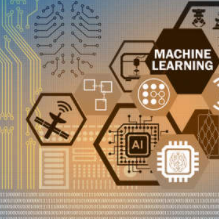
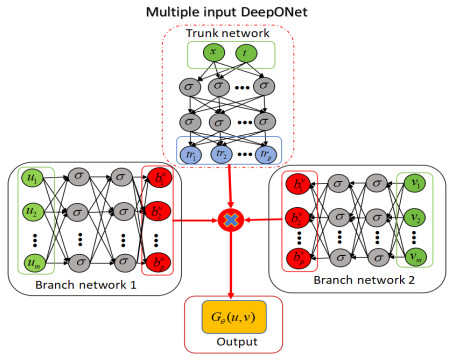
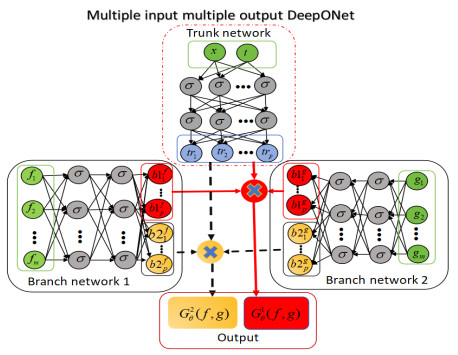









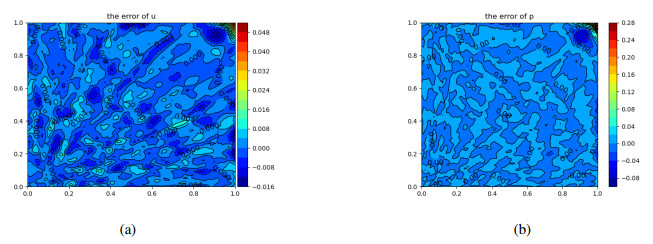
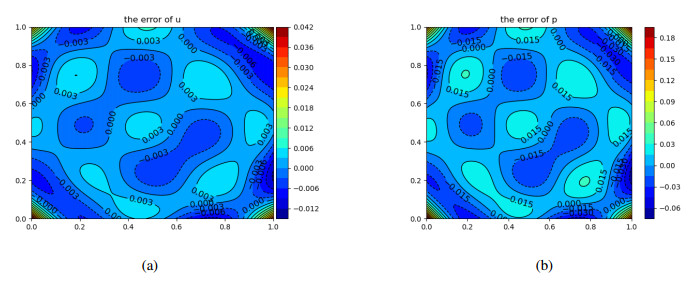
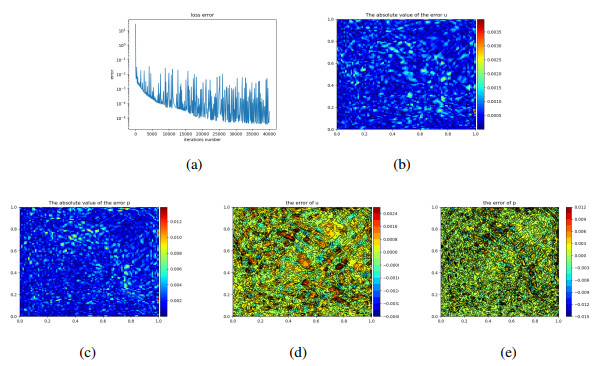
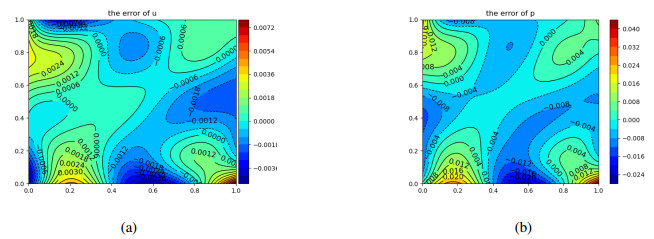
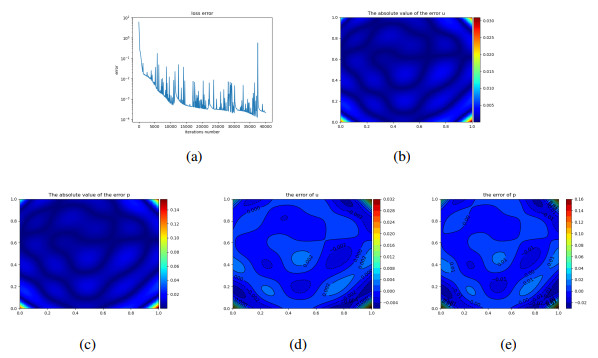
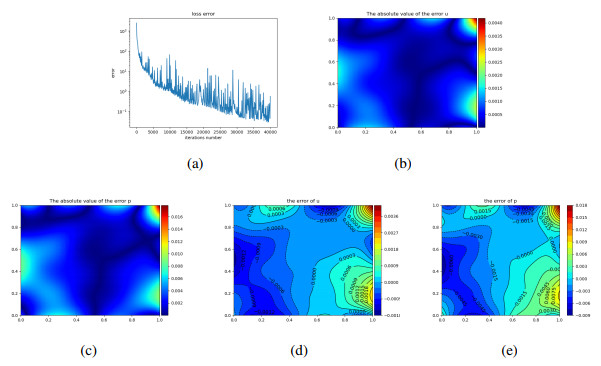
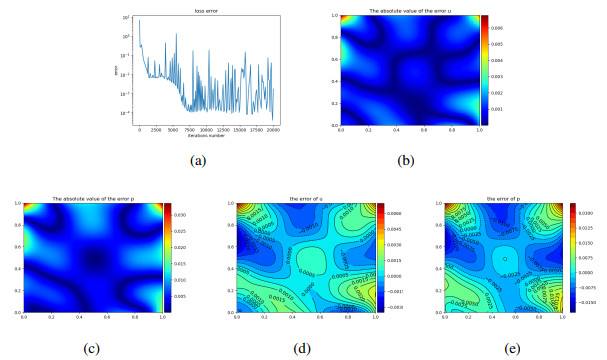
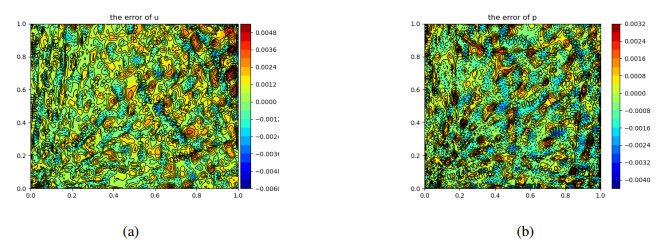
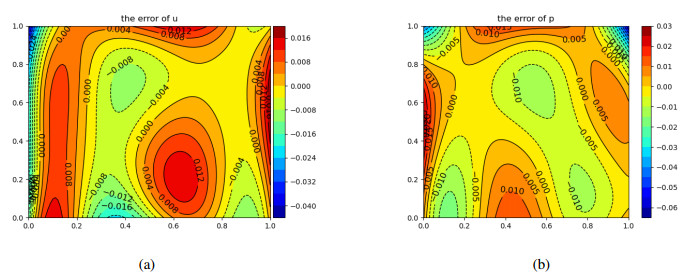
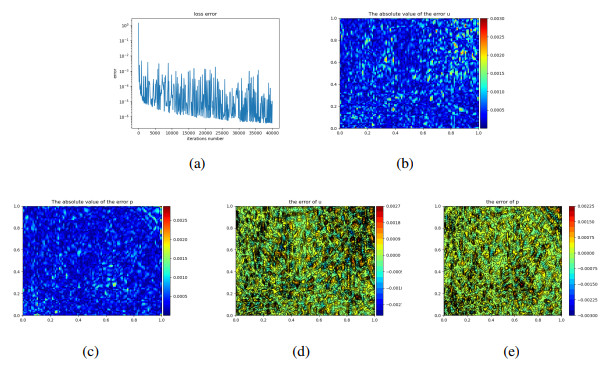
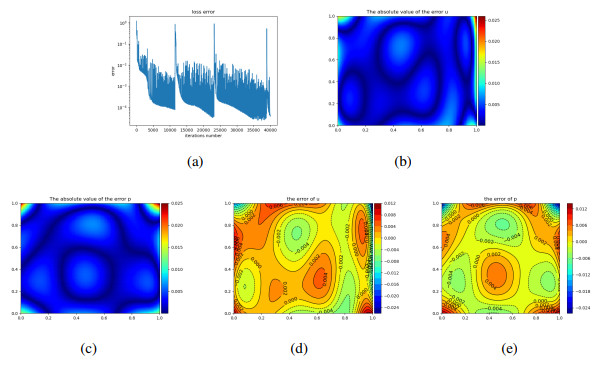




 DownLoad:
DownLoad: